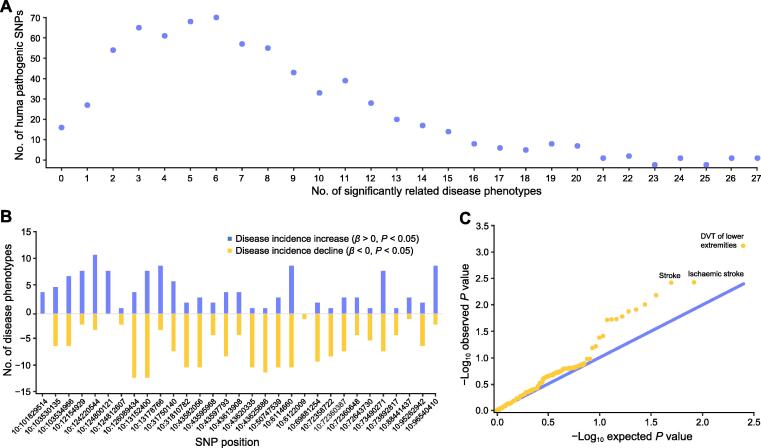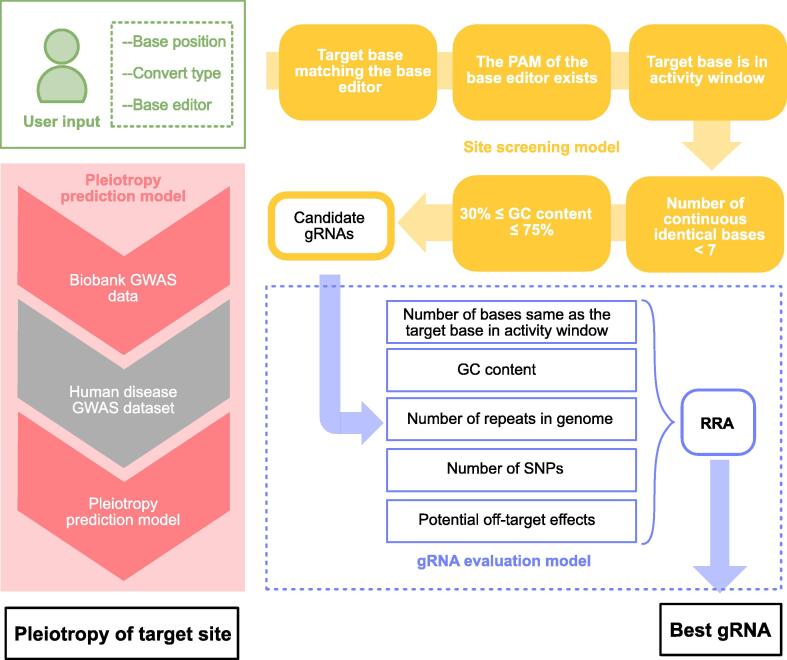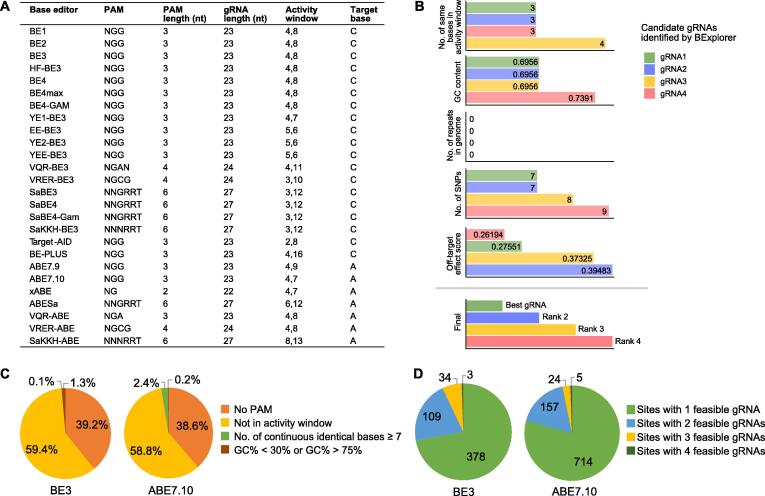利用 BExplorer 系统探索优化的碱基编辑 gRNA 设计和多效应。
IF 7.9
2区 生物学
Q1 GENETICS & HEREDITY
引用次数: 0
摘要
碱基编辑技术正越来越多地应用于基因组工程,但目前设计向导 RNA(gRNA)的策略主要依赖于经验,而不是可靠高效的硅学设计。此外,碱基编辑对疾病治疗的多效性影响仍有待探索,这阻碍了它在临床上的进一步应用。在这里,我们介绍了 BExplorer,这是一个综合全面的计算管道,用于优化现有 26 种碱基编辑器的 gRNA 设计。利用 BExplorer,我们描述了针对 BE3 和 ABE7.10 两种主流碱基编辑器的结果,并评估了相应碱基编辑位点的多效应。BExplorer 分别发现了人类基因组中524个和900个可编辑的致病性单核苷酸多态性(SNP)位点,以及BE3和ABE7.10所选的优化gRNA。此外,还系统探讨了 707 个经过碱基编辑的致病性 SNP 位点对 151 种疾病的影响,揭示了它们的多向效应,表明鉴于潜在的多向效应,应谨慎使用碱基编辑。总之,利用 BExplorer 对优化的碱基编辑 gRNA 设计和相应的多向效应进行系统探索,为在疾病治疗中应用碱基编辑提供了计算基础。本文章由计算机程序翻译,如有差异,请以英文原文为准。



Systematic Exploration of Optimized Base Editing gRNA Design and Pleiotropic Effects with BExplorer
Base editing technology is being increasingly applied in genome engineering, but the current strategy for designing guide RNAs (gRNAs) relies substantially on empirical experience rather than a dependable and efficient in silico design. Furthermore, the pleiotropic effect of base editing on disease treatment remains unexplored, which prevents its further clinical usage. Here, we presented BExplorer, an integrated and comprehensive computational pipeline to optimize the design of gRNAs for 26 existing types of base editors in silico. Using BExplorer, we described its results for two types of mainstream base editors, BE3 and ABE7.10, and evaluated the pleiotropic effects of the corresponding base editing loci. BExplorer revealed 524 and 900 editable pathogenic single nucleotide polymorphism (SNP) loci in the human genome together with the selected optimized gRNAs for BE3 and ABE7.10, respectively. In addition, the impact of 707 edited pathogenic SNP loci following base editing on 131 diseases was systematically explored by revealing their pleiotropic effects, indicating that base editing should be carefully utilized given the potential pleiotropic effects. Collectively, the systematic exploration of optimized base editing gRNA design and the corresponding pleiotropic effects with BExplorer provides a computational basis for applying base editing in disease treatment.
求助全文
通过发布文献求助,成功后即可免费获取论文全文。
去求助
来源期刊

Genomics, Proteomics & Bioinformatics
Biochemistry, Genetics and Molecular Biology-Biochemistry
CiteScore
14.30
自引率
4.20%
发文量
844
审稿时长
61 days
期刊介绍:
Genomics, Proteomics and Bioinformatics (GPB) is the official journal of the Beijing Institute of Genomics, Chinese Academy of Sciences / China National Center for Bioinformation and Genetics Society of China. It aims to disseminate new developments in the field of omics and bioinformatics, publish high-quality discoveries quickly, and promote open access and online publication. GPB welcomes submissions in all areas of life science, biology, and biomedicine, with a focus on large data acquisition, analysis, and curation. Manuscripts covering omics and related bioinformatics topics are particularly encouraged. GPB is indexed/abstracted by PubMed/MEDLINE, PubMed Central, Scopus, BIOSIS Previews, Chemical Abstracts, CSCD, among others.
 求助内容:
求助内容: 应助结果提醒方式:
应助结果提醒方式:


